As the name suggests, pressure gauges are used to measure the pressure of various liquids and gases. Pressure gauges have various usages like in the fields of pneumatics and hydraulics, devices like medical pumps and compressors, utilities like gas monitoring and refrigeration controls, etc.
The core technology implemented in industrial pressure gauges is more than a hundred years old and they still remain as the most used pressure measuring devices of modern times. and now currently more types
manometer are developed , such as diaphragm seals pressure guage or chemical seal pressure pressure , low pressure pressure gauge.etc.
Most pressure gauges have a Bourdon tube, a socket and gear assembly and a pointer and dial to measure the pressure. Some recent machines also have a visual display that shows the pressure measurement as an electrical output and can monitor additional parameters like the temperature of the fluid.
Selecting an industry Pressure Gauge
There are a few essential factors that must be considered while selecting a manometer. One of the foremost points is the engineering and system design of the device. This has a significant impact on the price, safety, and accuracy of the device. Usually, pressure gauges are available with varying accuracy levels like (+/-)0.25%, (+/-)0.5%,(+/-)1% , etc. up to 2-2.5%. Additionally, there are options available for dual and single range scales. Newly designed systems may have an accuracy level which is different from replacement parts.
Below the various factors have been explained in detail.
Engineering and Design
Design aspects of engineering are also related to device accuracy. For example, the higher the accuracy of measurement, the bigger the dial size for displaying the smallest of incremental pressure readings. This, in turn, can make the device occupy a larger space.
The operator's abilities to read from a distance will also dictate the dial size necessary for the application. The ideal pressure gauge will optimize both the desired scale measurements and the viewing distance required to read the scale.
Another factor to consider is whether there is any chance of a dynamic pressure accompanied by pulses and surges in the system. In that case, a gauge with an operating pressure in the 50% to 75% range in the scale must be selected so as to allow room for the swings in pressure while measurement.
The next engineering consideration is the loss of accuracy that can result from overpressure conditions. Usually, the process material (liquid or gas) passes through pipes under high pressure and gauges or sensors mounted on the pipe measure the pressure. Activities like switching the pumps on or off, opening or closing of valves, etc. a surge in the flow of the fluid material, thus resulting in a spike. Such sudden spikes can damage devices and a pressure gauge is applied to counter that impact. In the case of overpressures, extra protection against spikes is given by using valves and snubbers.
Temperature Conditions
Both process and ambient temperatures have a significant impact on the accuracy of the manometer measurement. Usually, every 18 degrees F (or 10 degrees C) shift results in an error of up to (+/-)0.4%. This happens due to the change in the elasticity of the Bourdon tube material with the change in temperature.
While controlling ambient temperature is not easy, process temperature conditions can be influenced in several ways. One practice is to install capillary systems and diaphragm seals that can withstand severe temperatures of even up to 600 degrees F. Several types of fluid-filled capillaries are available for this purpose. Another way is to use coil or pigtail siphons in steam service devices to dissipate the heat generated.
In places with extremely cold ambient temperatures, people opt for heat trace designs that use either steam or electric sources.
Corrosion
The kind of material being measured and the surrounding environmental conditions have an impact on the Bourdon tube. And in some cases, this can lead to corrosion in the form of a pinhole leakage or fatigue failure from stress cracking. Needless to say, this impacts the gauge accuracy. Thus it is important to take into consideration the compatibility of the gauge materials with the fluid that it is going to measure. Sometimes
diaphragm seals pressure guage are incorporated to form a protective layer between the gauge and the media.
Vibration
And lastly, vibration from the surrounding equipment like pumps and motors and other rotating parts can have a serious impact on the gauge accuracy. This is because the additional vibration causes wear and tear on the device and can result in a malfunction of the internal parts like the Bourdon tube and the gears. Vibration also results in the pointer to oscillate, thus making it difficult to get an accurate reading.
In fact, one of the most common reasons for the failure of pressure gauges is the presence of vibrations. The usual remedy for this is to use gauges filled with liquids like silicone or glycerin. The liquid not only reduces the oscillation of the pointer but also protects the internal part by providing lubrication.
Thus, it is evident that pressure gauges come with several customizations in sizes, process connections, and styles. The proper device must be selected depending on the applications and the requirements of the system.
In Conclusion
In addition to the above variations in pressure gauge designs, a number of accessories are also available to enhance the performance of the device. For example, piston and sintered type snubbers are used to achieve better readability by taking care of the sudden surges and spikes in the media pressure. Maximum indicating pointers are essential to know when the pressure is spiking in the system, especially during the initial starting time and for troubleshooting. However, they can add some pressure to the Bourdon tube.
Then to calibrate the line of sight of the gauge dial, swivel adaptors can be used. Set pointers can be utilized to know the maximum and minimum operating pressures of the device and its vacuum value. Finally, there are rubber gauge protectors that safeguard the gauges from physical ear and tear and excessive vibration.
Thus, pressure gauges might seem to be a fairly simple device when it comes to its functionality, but it is essential that all the above-mentioned factors are kept in mind while selecting the right device suitable for the purpose of the application at hand.
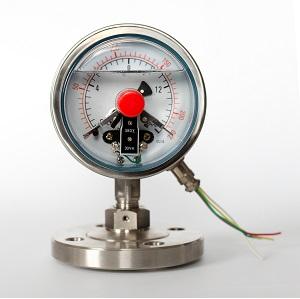 Oil filled electric contact pressure gauge with diaphragm seal2019/08/23Oil filled electric contact pressure gauge with diaphragm sealVIEW
Oil filled electric contact pressure gauge with diaphragm seal2019/08/23Oil filled electric contact pressure gauge with diaphragm sealVIEW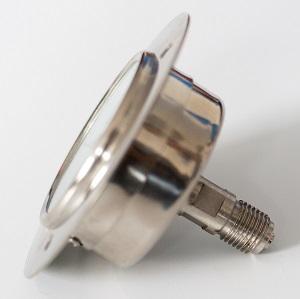 Front flanged panel mount pressure gauge2019/08/23An inexpensive utility pressure gauge for the broad commercial and industrial markets. suitable for air, water, oil, gas or any other media not corrosive to brass.Features:Front Flanged PanelMount Des...VIEW
Front flanged panel mount pressure gauge2019/08/23An inexpensive utility pressure gauge for the broad commercial and industrial markets. suitable for air, water, oil, gas or any other media not corrosive to brass.Features:Front Flanged PanelMount Des...VIEW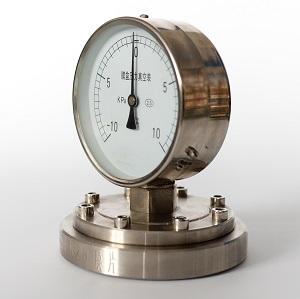 Low Pressure Diaphragm Pressure Gauges2019/08/22Low pressure diaphragm pressure gauge has features of durability, efficiency and accuracy. these are suitable for low-pressure measurement of commercial heating, level measurement, gases distribution,...VIEW
Low Pressure Diaphragm Pressure Gauges2019/08/22Low pressure diaphragm pressure gauge has features of durability, efficiency and accuracy. these are suitable for low-pressure measurement of commercial heating, level measurement, gases distribution,...VIEW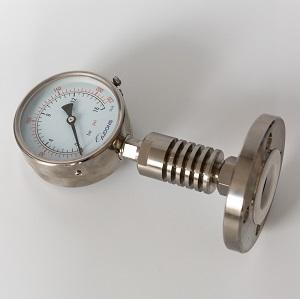 High Temperature Diaphragm Seal Pressure Gauge2019/08/22A diaphragm pressure gauge is a device that uses a diaphragm with a known pressure to measure pressure in a fluid. These applications may be corrosive, high temperature, clogging, or require a sanit...VIEW
High Temperature Diaphragm Seal Pressure Gauge2019/08/22A diaphragm pressure gauge is a device that uses a diaphragm with a known pressure to measure pressure in a fluid. These applications may be corrosive, high temperature, clogging, or require a sanit...VIEW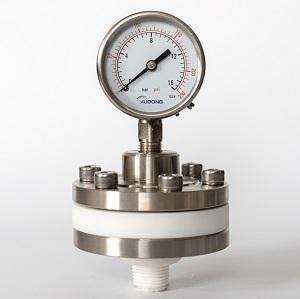 PTFE Diaphragm Seal Pressure Gauge2018/12/04Teflon (PTFE) material diaphragm seal pressure gauge are manufactured for protecting the pressure gauge from strong corrosive medium.VIEW
PTFE Diaphragm Seal Pressure Gauge2018/12/04Teflon (PTFE) material diaphragm seal pressure gauge are manufactured for protecting the pressure gauge from strong corrosive medium.VIEW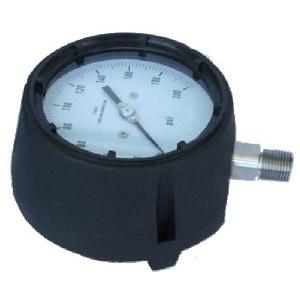 Resin phenolic pressure gauge2019/04/16Safety Resin phenolic pressure gauge with solid baffle wall designedExcellent load-cycle stability and shock resistancePHENOL CASE PRESSURE GAUGE Technical SpecificationsNominal Size: 41/2” Pressure...VIEW
Resin phenolic pressure gauge2019/04/16Safety Resin phenolic pressure gauge with solid baffle wall designedExcellent load-cycle stability and shock resistancePHENOL CASE PRESSURE GAUGE Technical SpecificationsNominal Size: 41/2” Pressure...VIEW